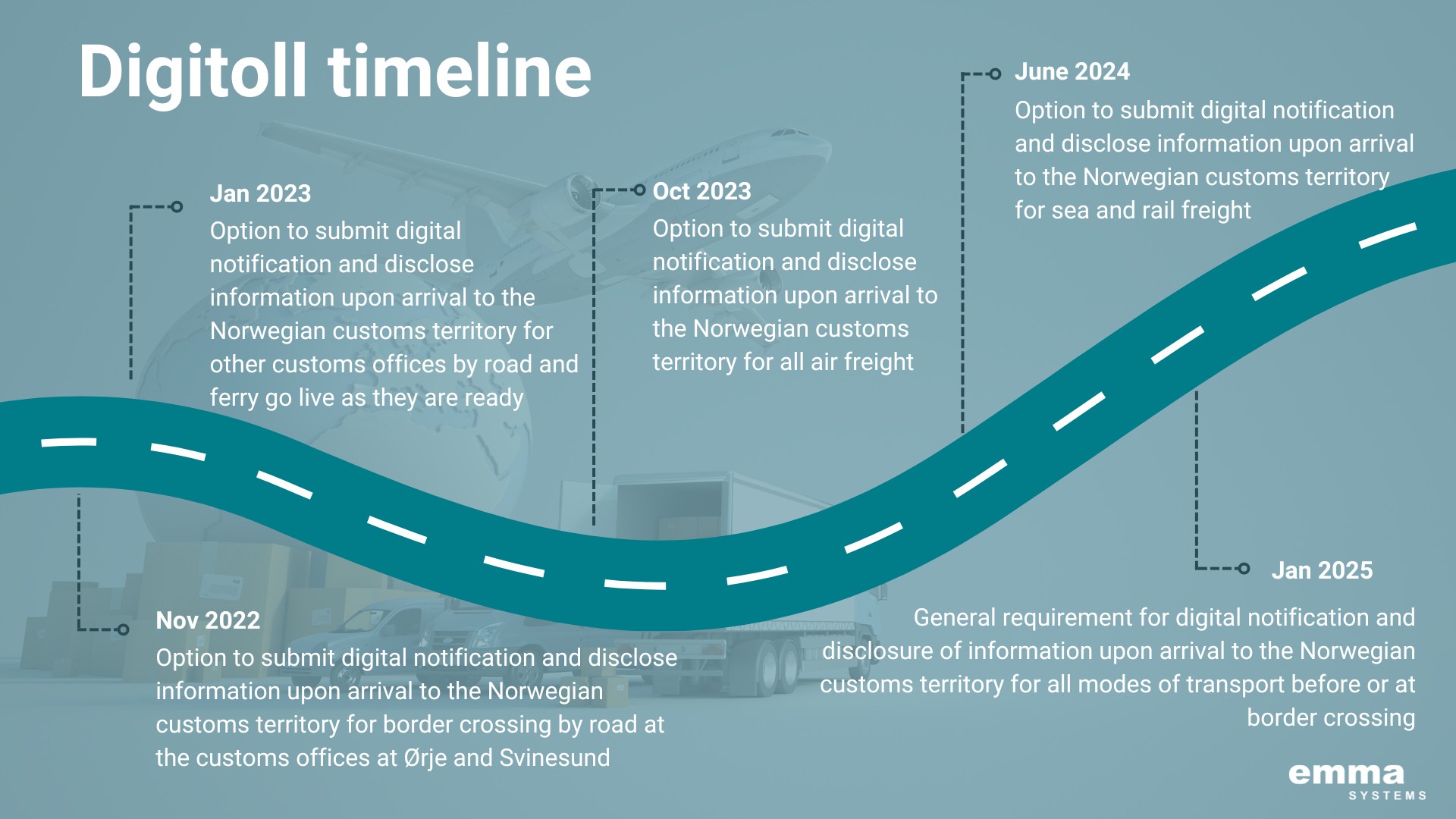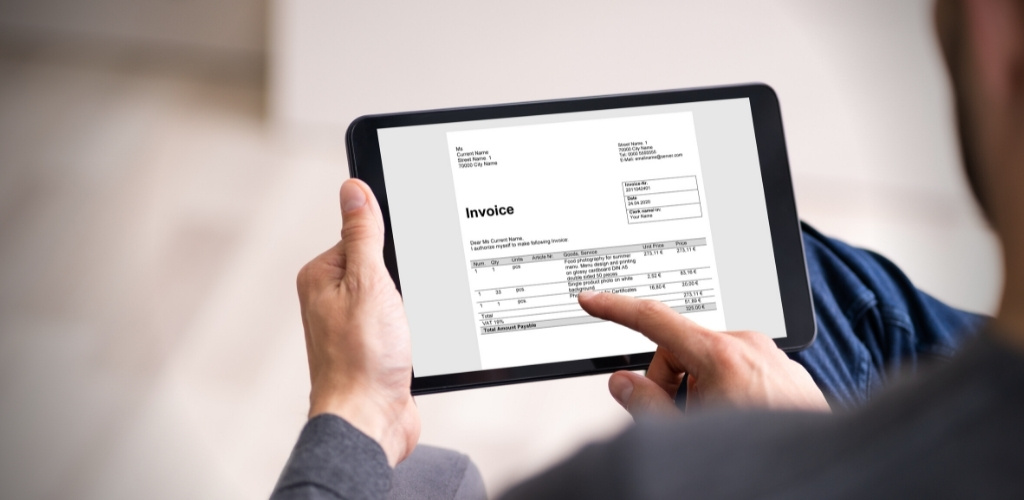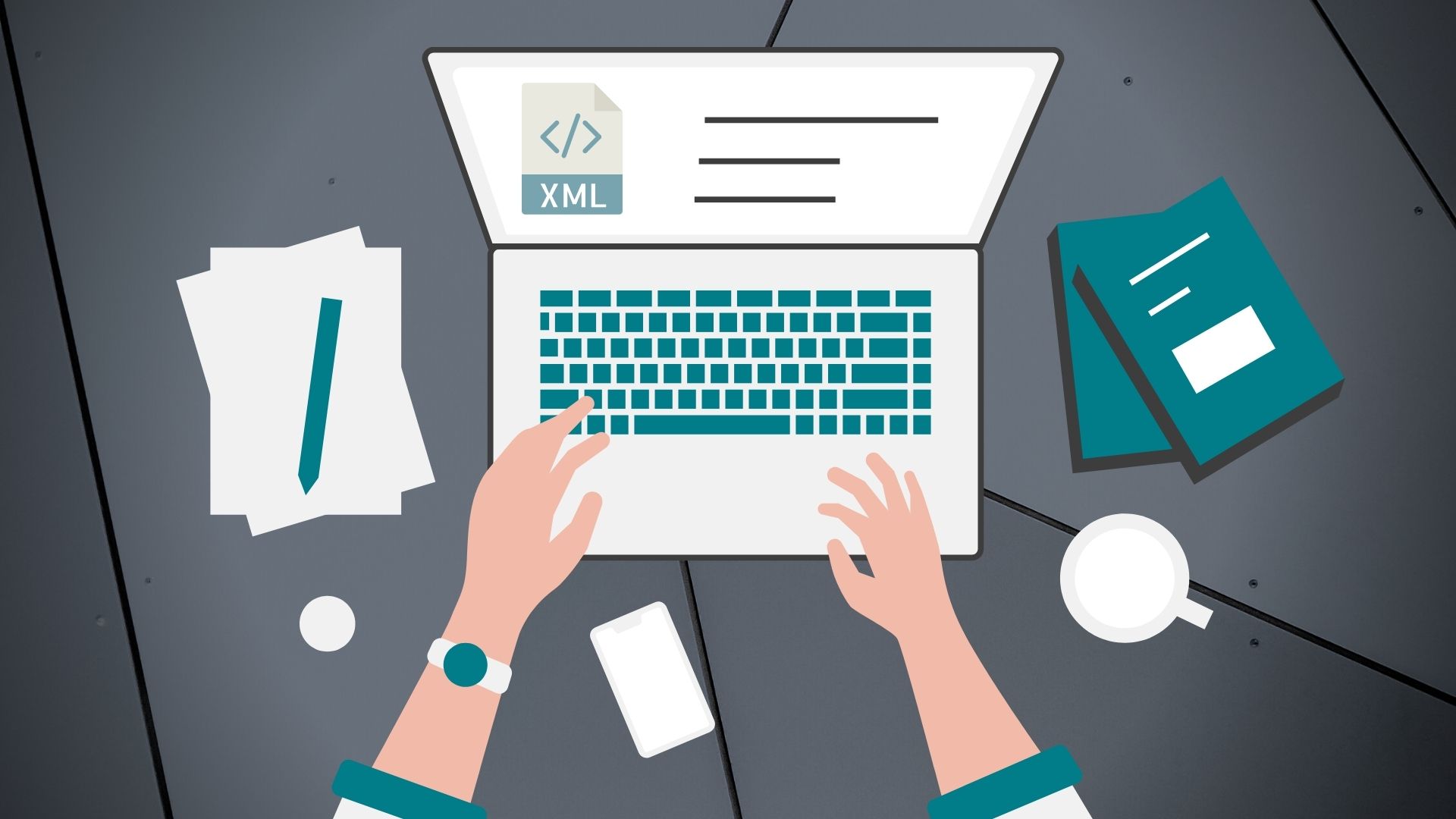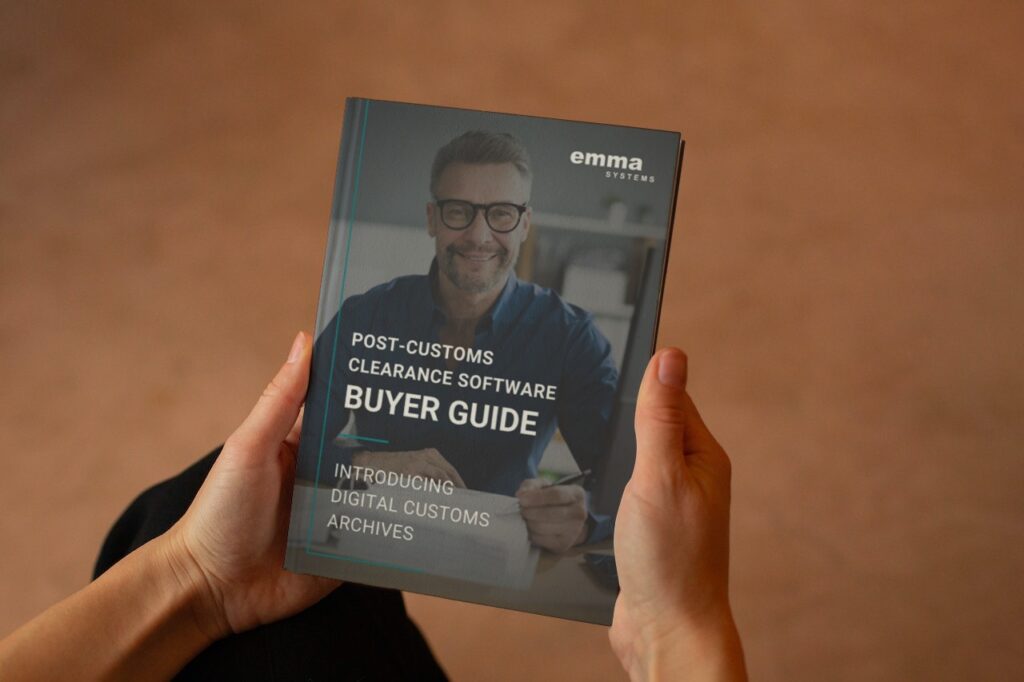In recent years, the Norwegian Customs Authorities, the Norwegian Tax Administration and several other Norwegian agencies, as well as their European counterparts, has embarked on extensive digitisation processes. The aim is to streamline work tasks and manage an increased workload in a more flexible way. As well as getting improved intel earlier on, to improve risk analysis and verification for the goods to be imported.
Digitalisation strengthens the authorites ability to control the movement of goods and will make the import and export of goods easier for businesses and private individuals
The Norwegian Customs
The introduction of Digitoll, digital customs processing, is an essential part of the strategy for the Norwegian Customs. With Digitoll, all goods must be placed under a customs procedure and, as a main rule, must be declared by the time the goods cross the border, at the latest.
The current arrangement, where goods can be transported directly to the consignee of the goods and declared within 10 days (direct transport), will be discontinued.
In the first phase, Digitoll corresponds to what we know as express clearance, and the project will be rolled out in phases until 2025.
Forwarders, carriers, and anyone who imports, or exports goods will need information on how digital customs will affect their processes. We strongly recommend that you keep up to date on the information coming from Customs about Digitoll and other upcoming changes.
Information from Norwegian Customs about Digitoll can be found here:
We also recommend reading the information letter for subcontractors / collaboration partners of Norwegian businesses written by the Norwegian Customs.
Suppliers in Europe, who are used to sending the goods first and the information afterwards, must now be able to convey the correct information to the Norwegian companies
The Norwegian Customs

Importers must get on board
Importers must understand their responsibility in the digitisation process and play an active role in ensuring that accurate and good information is available before the actual border crossing.
Going forward, digital border crossing will have a huge impact on Norwegian importers’ ability to import and declare goods quickly. If Customs has access to complete information at border crossing, the importer avoids unnecessary delays caused by border stays or forwarding to warehouses.
Importers who do not declare their goods themselves, will benefit from close cooperation with their suppliers and forwarders to ensure that forwarders are provided with accurate and timely information.
It’s about time Norwegian importers get involved in the customs part of their supply chain. A direct consequence of the Digitoll roll-out is that if data, mandatory documents or certificates are missing at the time of border crossing, the entry of the goods may be rejected.
Ørjan Ibs Eriksen, Product Manager E-Doc, Emma Systems
It is anticipated that in 2023, freight forwarders will need authorization / a power of attorney from the companies they represent to clear customs of behalf of. To ensure that the freight forwarders you authorize actually meet your requirements, we advise you to use this opportunity to “clean up” your list of freight forwarders.

The questions you should ask your suppliers and forwarders
To ensure that sufficient information is made available before / at border crossing, you should involve both the suppliers of the goods and the customs broker / freight forwarders used in the importation.
Suppliers
In cooperation with your suppliers, you need to ensure that the forwarders have the information they need to do their job and avoid unnecessary time and errors.
Invoice information
This includes ensuring that the invoice is sufficiently completed and:
- Clearly identifies the parties in the sales process, with organization numbers (especially important where buyer and delivery address is not the same)
- Contains information about the goods (customs tariff, weight, value, country of origin, etc.)
- Supports reuse of data (like proper invoice numbers, or PO numbers that can be linked and traced by the client), for an overview and traceability in the process further
See the Norwegian bookkeeping regulation to learn more about invoice requirements.
Invoice in Excel?
If the supplier can deliver the invoice details in Excel format (.xls / .xlsx), this will make the forwarder’s job easier and reduce the risk of typing errors.
Use of proforma?
Proforma invoices are generally not considered valid documentation of customs value in cases where payment is to be made for the goods, and may entail an increased risk of deviating values being registered and booked. To ensure correct information, you should ask your suppliers to issue commercial invoices directly, rather than using proforma.
If proforma is still used, care should be taken to ensure that the reference is linked to the final invoice.
See the Norwegian Customs Guide to Customs Value for more details.
In 2021, the Norwegian Tax Administration had a new proposal out for consultation: Obligation to provide information on sales and purchase transactions. The proposal stated that the parties to the transaction were required to digitally report the details of the financial transactions to the authorities from 2024. The proposal was later put on hold until future notice. However, we still recommend that traders prepare and work on improving their traceability throughout the documentation process from declared value to accounted value.

Customs brokers & Freight forwarders
File input using XML or Excel
Does the freight forwarder have the possibility to import order data from the supplier (XML/Excel)?
With XML declaration data, you can possibly obtain customs clearance data down to individual item lines, tariff numbers, tax codes, and possibly down to unique article numbers.
Generation of product lines
If product lines can be generated, time consumption and quality can be improved and the price per customs clearance can be kept down by less time spent per declaration.
Supporting documents
Are sub-documents delivered together with the declaration as part of the service, or does the freight forwarder require an additional fee for this?
In this context, it is also worth noting that it is the responsibility of importers (and exporters) to keep their declarations as well as supporting document.
Freight forwarders etc. who declares on behalf of others do not in principle have an independent storage obligation
The Norwegian Customs
Do you have questions about what needs to be stored and what your responsibilities are? Read about this in the Norwegian Customs Act.
Transfer pricing (TP) and recalculations
In the past, businesses in agreement with the Norwegian Customs Authority have been able to make use of an annual readjustment of the customs value linked to transfer pricing. This scheme has ceased, and it is now required that each affected customs declaration is recalculated.
Do you operate with transfer pricing and need to make recalculations as a result? Then you have even more reasons to choose forwarders that support XML input! Using XML, it is easier to create a blueprint of the original declaration and make recalculations quickly and easily.
Learn more about customs value and transfer pricing.

To sum it up: Good data is the key to success
For importers and exporters who want to face the digitisation of customs well equipped and prepared, the key is good data.
To ensure that your customs data is as good as possible, you should:
- Take ownership of the item information
- Work closely with your suppliers, customs brokers, and freight forwarders
- Ensure traceability throughout the entire process, from order via customs declaration to book value and reporting
- Establish written routines for control and deviation management
Take control of your customs data with Emma E-Doc
Book a free demo of Emma E-Doc to get started

